Listen to the article:
I will never forget the day COVID-19 changed everything. It was March 16, 2020, and I was sitting at the Parks Canada desk in The Forks Market armed with my little bottle of hand sanitizer and scared of what was to come.
There were already a few cases in Winnipeg, only about four at the time. Still, the virus was new, and people were starting to panic.
Throughout the day, businesses started to close early. As a result, there were only a handful of visitors at Manitoba’s number one tourist destination.
In retrospect, four cases of COVID-19 isn’t a lot. But the world was locking down, and thousands of people were dying every day, I couldn’t help feeling afraid.
I sat at my desk, sanitizing it every hour, wondering if I should pack up and go home early. Eventually, my supervisor sent me.
So, I placed the closed sign on the front desk for the last time. I felt uneasy, like I didn’t want to believe this was happening. I looked back at my desk as I walked away, feeling optimistic that I’d be back at The Forks in a month, but I never got the chance.
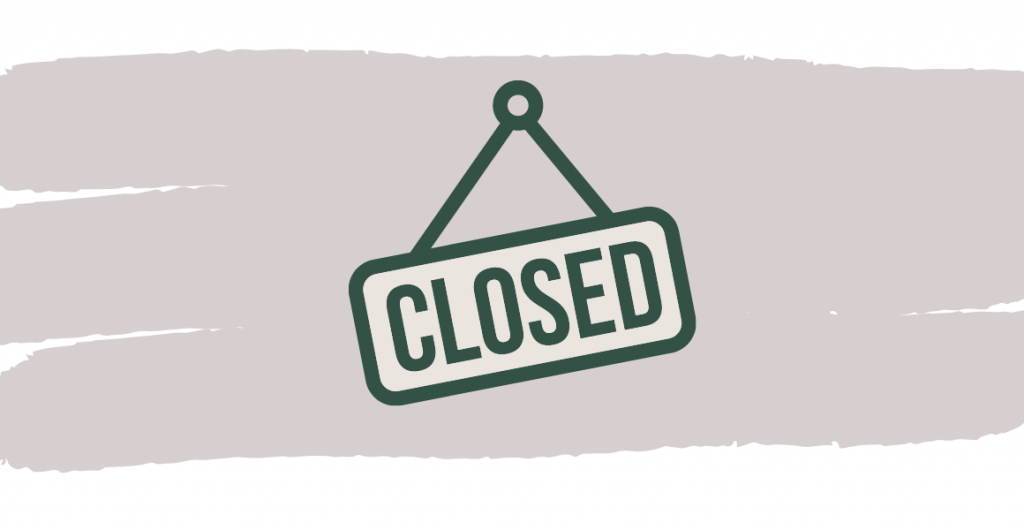
Tourism and COVID-19
The World Health Organization declared COVID-19 a viral pandemic on March 11, 2020, then shortly after, Manitoba declared a state of emergency.
The pandemic completely changed tourism over the last two years. Before COVID-19, international tourists were the main audience for Manitoban tourism companies. Once the Manitoba government put restrictions in place that didn’t allow anyone to come to Manitoba without self-isolating for two weeks, there were hardly any tourists anymore. Even Manitobans who left the province needed to isolate for two weeks when they returned.
With so many barriers, Jackie Tenuta, Vice President of Destination Management at Travel Manitoba said the question became, how do we market Manitoba to Manitobans?
Businesses needed to get creative.
Finding New Tourists
Getting locals who cancelled their trips to Mexico and Europe to plan a vacation an hour or two away from home is not easy.
Since Manitobans became the new target audience, companies like Travel Manitoba and Tourism Winnipeg stepped up to the challenge and created campaigns for Manitobans. The Road Trip Guide 2021 and Here For It marketing campaigns were explicitly made to help Manitobans explore their province.
Even Melissa Van Soelen, Manager at Interlake Tourism Association, said the company started using Driftscape, an app people can download on their phone, to make it easy and safe for Manitobans to explore different attractions on road trips. And while some Manitobans were eager to explore their province early in the pandemic, others took more time to get comfortable.

What are the stages of travel recovery?
According to Beyond COVID-19: The Road to Recovery for the Travel Industry published by TripAdvisor, there are five stages of travel recovery:
- Decline — Travel declines as people return home and practice social distancing.
- Plateau — Potential travellers stay inside to help flatten the curve.
- Emerge — The initial crisis begins to pass, restrictions loosen, and people start venturing out again.
- Domestic — People become more confident and begin to feel more comfortable travelling in their own country.
- International — The final stage of recovery is when people start to feel comfortable travelling abroad again.
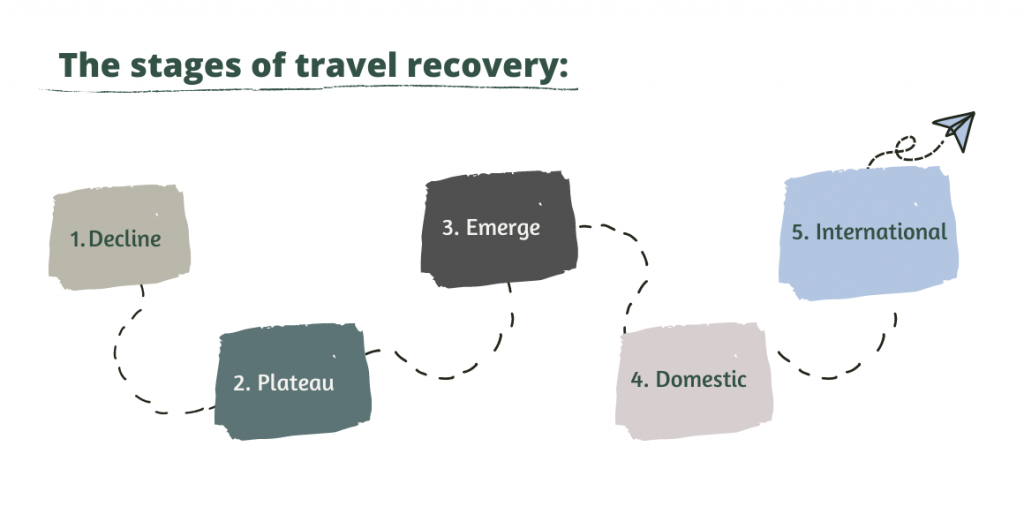
How did Manitobans spend their vacations?
Manitobans often have a self-deprecating view of our beautiful province. From my experience working at Parks Canada and Travel Manitoba, this is because most Manitobans don’t know the vast number of travel opportunities our province offers.
For example, Maureen Andreychuk is usually the type of Manitoban to book their vacation outside the province, but COVID-19 forced her to cancel her Caribbean cruise and figure out how to spend her summer at home the past two years.
“The first summer in 2020, I just stayed at home and didn’t do as much exploring, but I wasn’t going to let this last summer go to waste. I went to Steep Rock, Bakers Narrows, Hecla, Childs Lake, Pisew Falls, and Flin Flon. So, I feel like I had a great summer,” said Andreychuk.
Andreychuk had no idea the number of great places in Manitoba because she was previously only aware of destinations within an hour of Winnipeg. She says many Manitoba attractions aren’t along the major highways, so they’re harder to see. Visiting these attractions takes effort and planning.
With many Manitobans desperate to get out of the house and visit friends and family, Manitoba’s provincial parks surged in popularity in summer 2020 and 2021. It was a low-cost and low-risk option if restrictions changed and forced Manitobans to cancel their plans.
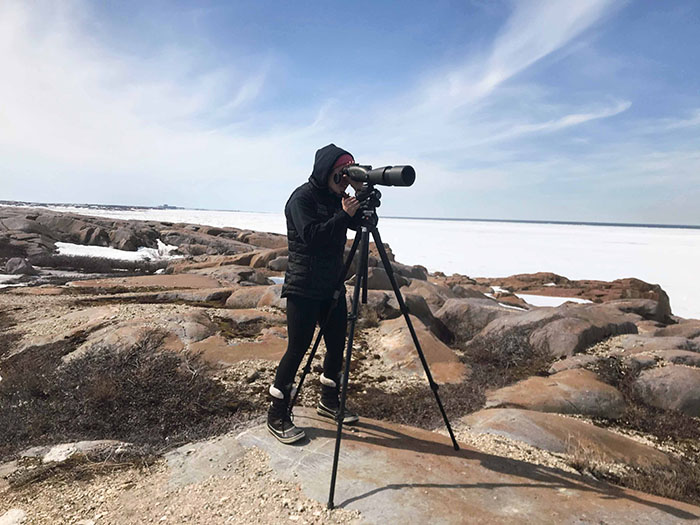
Maddy Mitchell typically spends her summer working at Travel Manitoba, helping people plan their trips or working at the Churchill Northern Studies Centre. Mitchell knows all the great spots for hiking, camping, and biking across Manitoba. As someone who visited provincial parks a lot before the pandemic, she noticed a huge difference.
“The trails and campsites were much busier than usual last summer. I’ve hiked the Mantario Trail a few times, and after three days, I normally don’t see anyone. But when I hiked the trail during COVID-19, it was hard to find a spot to put my tent down because there were so many more people,” said Mitchell.
It’s not just the Mantario Trail. It’s all of Manitoba’s trails. Year-round hiking is even becoming more popular because it was a safe way to meet friends and family during the pandemic’s peak.
As someone who generally only hikes during the summer, I was one of the people who braved the cold and hiked the crowded trails in Birds Hill Provincial Park with my family.
Provincial campgrounds were so popular that it took people several hours to book a campsite or a yurt using the outdated parks reservation system. The site wasn’t ready for the surge of interest brought on by the pandemic.
Mitchell said the Manitoba government neglected the reservation system for so long, and it’s no surprise that it took people hours to book a campsite. But, because of the pandemic, the Manitoba government realized they needed to replace the reservation system.
The new provincial parks reservation service should be ready in 2023. In the meantime, staggered reservation days for campgrounds and yurts will hopefully shorten wait times in 2022 and not crash the website.
As travel options begin to open back up the question remains, will Manitobans keep travelling in Manitoba? For Manitobans like Andreychuk, she says COVID-19 definitely changed her travel habits. She plans to book more vacations in Manitoba this summer.
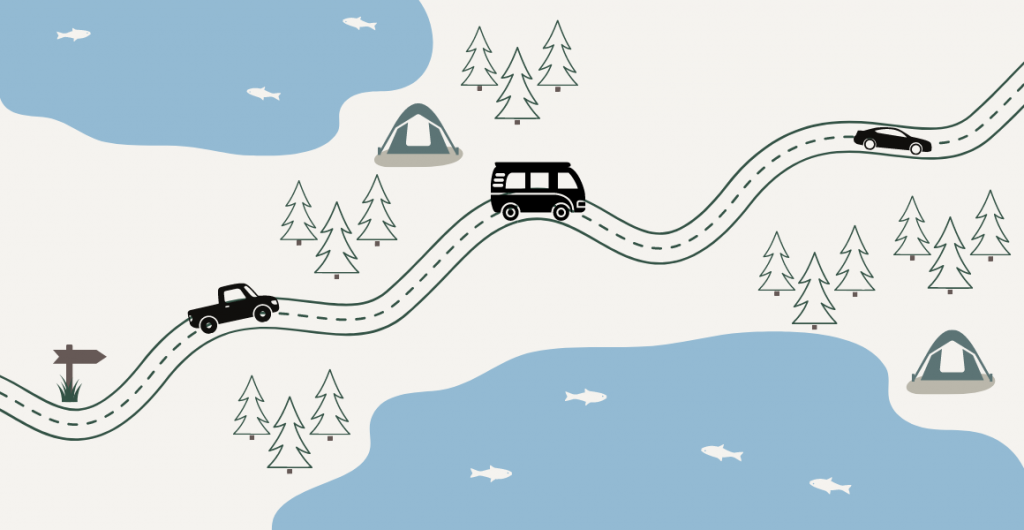
How did the tourism community help each other?
After the office closed in March 2020, I was lucky enough to continue working from home, but that wasn’t the case for everyone that works in the tourism industry.
According to Travel Manitoba, in 2019, the Manitoba tourism industry employed more than 20,000 Manitobans. The industry made more than $1.63 billion to help the local economy and welcomed more than 10 million visitors. However, because of the pandemic, tourism’s hospitality sector’s expected to lose between 6,800 and 11,000 jobs.
Federal and provincial relief was available to help businesses when they had to close, and some tourism organizations, like Interlake Tourism Association, Tourism Winnipeg, and Travel Manitoba, helped make it easier for their partners to access this information.
Interlake Tourism Association supported its members’ businesses during the first lockdown by helping companies that weren’t on social media create accounts to communicate with the public.
Travel Manitoba and Tourism Winnipeg each created COVID-19 toolkits for their partners and acted as a liaison with the government regarding restrictions. The toolkits included documents summarizing the changing regulations from the federal and provincial governments.
Travel Manitoba was the go-between for their partners and the government when rules and regulations didn’t make sense for all the organizations.
Tenuta said there was a point in the pandemic when the government loosened restrictions and closed movie theatres without considering Manitoba’s two drive-in movie theatres. So, Travel Manitoba contacted the government to make sure the new loosening of restrictions would include drive-in theatres.
These resources helped their partners stay up to date with the ever-changing tourism landscape.
The Hospitality Sector
One challenge, in particular, was getting people to stay at hotels and bed and breakfasts when they were vacationing so close to home.

“We needed to engage with Manitobans who were still under border quarantines and restrictions and ask them to stay in the province. So that’s when we started the age of the staycation,” said Natalie Thiesen, Vice President of Tourism at Economic Development Winnipeg.
The Manitoba Chambers of Commerce (MCC) started the Tourism Rebate Incentive Program (TRIP) in July 2021 to get people to stay at these hotels. The program encouraged Manitobans to spend their time and money in the province and help our economy.
This offer was exclusive for Manitobans who visited participating attractions and stayed at participating hotels and bed and breakfast accommodations. In return, the MCC would send an electronic Mastercard or PayPal gift card to the person who submitted their receipt to the program’s website.
Initially, the program was only running from July 31 to August 16, 2021, but it was so popular that they added another phase from August 16 to September 12, 2021.
Tenuta said the pandemic affected hotels in vastly different ways. Some hotels and resorts had record-breaking years, but others that relied on large events like conventions and conferences struggled.
Businesses and Employees
Many businesses in Manitoba were struggling to stay open because of the multiple closures and capacity limits. Some companies found they weren’t as busy as they were pre-pandemic and laid-off employees because they couldn’t support them during the pandemic’s peak.
“Our industry represents a significant employer in our province. But, unfortunately, only some individuals who lost their jobs during the pandemic are slowly coming back,” said Thiesen.
In a typical year, Churchill can see its population of 800 people triple because of the influx of students, tour operators, and tourists gearing up for polar bear, beluga, and northern lights seasons. But because of travel restrictions that included no travel above the 53rd parallel, businesses didn’t need to hire as much seasonal staff.
As someone that helps tourists plan their trips to Churchill at Travel Manitoba, I couldn’t help but wonder how this tourist destination was adapting to the pandemic.
Fiona Rettie, Churchill resident and sustainability intern at the Churchill Northern Studies Centre, said quite a few businesses needed to take a step back during the pandemic, but no one declared bankruptcy. There are only a few local tour operators in Churchill. Most tour operators are companies from Winnipeg like Frontier’s North Adventures.
Rettie pointed out that it isn’t necessarily the big Winnipeg companies that will suffer the most but their employees.
“Churchill used to be a transient place before the pandemic, but now there aren’t people coming and going like there were two years ago. Our population is steady, and there are no new jobs. So, no new people. It’s much quieter here now,” said Rettie.
Events and Tours
Since Churchill attracts more international and out-of-province tourists than Manitobans, the town had hardly any tourists in 2020 and 2021.
Once restrictions loosened, the Churchill Northern Studies Centre started hosting a handful of themed learning vacations about polar bears, birds, belugas and the northern lights.
“We offered the same programs as before, but we just dialled them back a little, so we have fewer people coming through,” said Rettie.
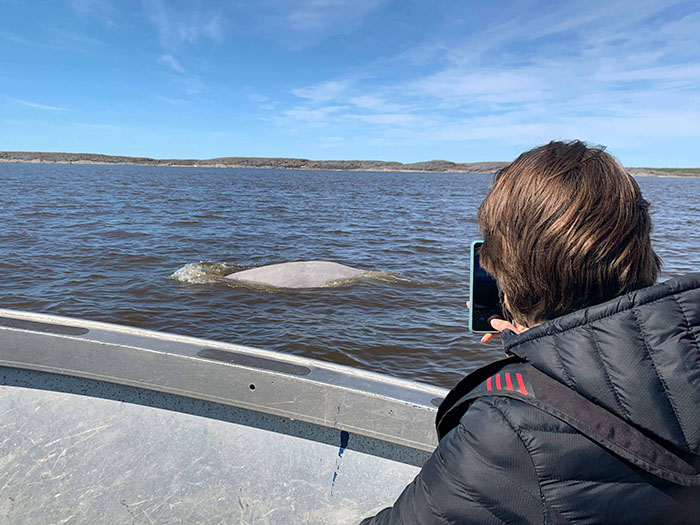
Most companies scaled down their in-person tours and events significantly to accommodate the fluctuating capacity restrictions. However, there were people looking for virtual activities.
Van Soelen found there was a huge demand for virtual activities. That’s why the Driftscape app was the best option for Interlake Tourism Association.
Using the app allows people to either plan a self-guided road trip or virtually tour the different sites on the map.
As Manitobans toured the province, some towns that don’t usually get lots of tourists were surprised by the number of visitors.
“Steep Rock got slammed with tourists because the town just wasn’t prepared for the number of Winnipeggers travelling to their community,” said Van Soelen.
Virtual tours made it safer for people who want to tour the province independently without interacting with tour operators.
Now many people want to interact with each other in person and have authentic experiences that aren’t on a screen.
When will international travel return to normal?
“The tourism sector was the first hit and, in many cases, it’s going to be the last to recover,” said Tenuta.
At the beginning of the pandemic, it seemed like it would be years before I’d leave the country or any tourists would be able to come to Canada. But as things start to open up, the idea of international travel seems closer than ever.
It’s hard to say exactly how comfortable people are travelling right now. Some people are already travelling internationally, while others are just starting to venture out of their homes again. Even though travellers are in different stages of the recovery process, their desire to travel never went away.
“Depending on how the recovery from this variant goes, we might be approaching normal domestic travel by this year. But business travel and international travel will take longer to get back to normal. So, for those businesses that rely on American and international customers, it will be a long haul for them,” said Tenuta.
I’ve started to see more international tourists visiting Travel Manitoba than I did in the fall, but tourists’ expectations when they travel aren’t the same as they were pre-pandemic.
According to Destination Canada, the way people travel is shifting. Therefore, the tourism market must change too. Travellers want the conveniences of booking online and virtual check-ins. They also want to know their hotel cares about their health and safety. Trends also suggest that tourists are looking for more Indigenous connections and outdoor experiences. The surge in popularity of Manitoba’s provincial parks was just the beginning.
Once the pandemic is over, Destination Canada points out that those who postponed retirement will start to retire. So, businesses will need to be prepared for the increase in visitors. Even if people aren’t retiring, with the rise in remote work, there is a possibility that tourists will travel and work simultaneously.
Did anything good come out of the pandemic?
Despite all the tragedy that came with COVID-19, it did open doors for Manitobans to start new businesses like the Interlake Brewing Co. in Gimli.
“It was kind of weird because the outcome was a lot different from what we had expected. Of course, some people and businesses suffered, but on the flip side, some businesses thrived,” said Van Soelen.
Tenuta even said some businesses had record years these past two years, especially resorts within a couple of hours from Winnipeg.
The Future of Manitoba Tourism
As restrictions loosen across the world, it’s hard to imagine what the next few years will bring for the Manitoba tourism industry.
“Tourism probably won’t be back to normal till 2024. Due to government restrictions, some businesses were financially affected and need more time to recover. Some people had to close permanently, so I feel like it will take some time,” said Van Soelen.
According to Destination Canada, the current tourism trends suggest that there will be an increase in domestic travel, with tourists focusing on leisure and digital opportunities. So, companies need to be ready for the upcoming changes and the increased competition.
Manitobans were vital in keeping the Manitoba tourism industry alive these last couple of years. It’s been a challenging time, but the future looks optimistic.
“I would say the biggest thing that’s changed is the appreciation Manitobans have for their communities and the people in them. I think there’s a much greater sense of gratitude for Manitoba than there was before the pandemic,” said Van Soelen.
Tenuta said that solely focusing on international tourists and not Manitobans was a missed opportunity before the pandemic. Manitobans are clearly interested in exploring Manitoba. In the future, it’s a matter of figuring out how to increase Manitobans spending in the province. If each Manitoban goes on a day trip or an overnight trip each year, it will positively impact the industry.
The pandemic forced companies and tourists to rethink how they view Manitoba. During those two years, Manitobans were exploring their province more than ever and visiting places they never would’ve gone to if the world hadn’t changed in 2020.
All graphics by Chloe Pommer
